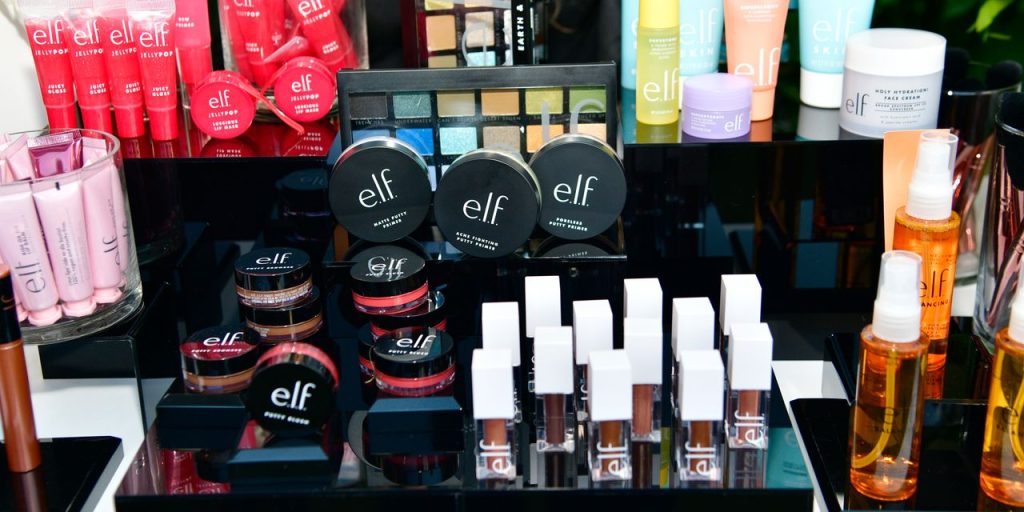As the pandemic has faded, so has the dominance of many sectors that surged during lockdowns, from streaming to grocery delivery. Now comes the latest victim: skin care.
For the first time since 2020, teenagers are spending more on cosmetics than on skin care, according to
Piper Sandler
‘s semiannual “Taking Stock With Teens” survey. According to the report, teen women said they are spending about $123 a year in makeup, compared with $119 in skin care. A year ago, teenagers were spending more on skin care than makeup, at $107 and $93, respectively.
Makeup spending decelerated across all age groups during the pandemic, according to a 2020 McKinsey study, as people stuck at home felt less need to buy and wear cosmetics. Instead, many turned toward skin care, a growing trend among beauty connoisseurs. Social media became flooded with skin care routines and product recommendations, while Google searches for “skin care” doubled from March 2020 to the present, according to Google Trends.
Now that the economy has opened up, however, young people may be shifting back toward spending on cosmetics. The number of teenagers saying they wear makeup every day jumped to 45% this spring, according to the survey, up from 37% a year ago and around 20% in 2021. Survey takers who said they wore makeup every day spent an average of $185 a year on cosmetics, compared with the survey average of $123 a year.
This could be an important shift for makeup brands, especially those that cater to a younger clientele. Piper Sandler’s Korinne Wolfmeyer calls out
e.l.f Beauty
(ELF),
Coty
(COTY),
Estée Lauder
(EL), and
Ulta Beauty
(ULTA) as some of her top highlights to capitalize on the trend.
While teens are becoming more focused on cosmetics, the skin care category continues to grow, the survey found, with spending on skin care up 11% year-over-year. That’s still a net positive for many makeup brands, given that many have also developed skin care offerings.
“The [beauty] category is benefiting from a much stronger connection between
beauty and self-care/wellness than the past,” wrote Oppenheimer analyst Rupesh Parikh in a note last week.
Most of the companies called out by Piper Sandler have been performing well over the last couple of quarters, posting strong financial results and ongoing growth. E.l.f. stock is up nearly 50% this year and Coty has gained 36%, while Ulta—which is a Barron’s stock pick—has gained 11%.
Estée Lauder
is down 2.8% this year, with the stock reflecting the company’s ongoing reopening struggles in China.
These stocks’ performance could be seen as proof that the so-called “lipstick effect” is alive and well, suggesting that the beauty category could be resilient even if the economy falls into recession. The theory posits that in tough economic times, consumers will forgo spending on big-ticket items and instead buy small, affordable luxuries—such as premium lipstick. The term was coined by Estée Lauder chairman Leonard Lauder to describe the way its lipstick sales surged during the 2001 recession.
“Even during a recessionary period, beauty is more resilient than other discretionary categories,” wrote TD Cowen’s Oliver Chen in a research note initiating coverage of Estée Lauder at an Outperform.
Estée Lauder’s sales increased 5.5% in fiscal 2001 and 3.6% in fiscal 2002. But evidence from more recent recessions is mixed. Estée Lauder’s sales jumped 12.4% in the fiscal year ended June 2008, but contracted 7.4% the following year.
Estée Lauder, Ulta, and Coty all saw revenue shrink in fiscal year 2020, though e.l.f. was able to boost revenue during that period despite the overall pullback in makeup spending.
Given the unique impact of the pandemic-fueled 2020 recession, it’s hard to make sweeping statements about how these companies’ stocks fare in a downturn. Of the four, only Estée Lauder was a publicly traded company during both the 2001 and 2008-2009 recessions. In 2001, the S&P 500 fell 14% from its high at the start of the recession to its trough month low; during that same period, Estée Lauder dropped 24.7%. And from December 2007 to June 2009, the stock lost 32%, while the S&P 500 shed 41%.
But regardless of whether the lipstick effect kicks in, Chen expects a continuation of strong demand for beauty in 2023 and 2024.
“We believe consumers may reduce their spending on beauty to a degree if the macroeconomic environment worsens,” he wrote. “But we expect continued investment in wellness and beauty.”
Write to Sabrina Escobar at sabrina.escobar@barrons.com
Read the full article here




